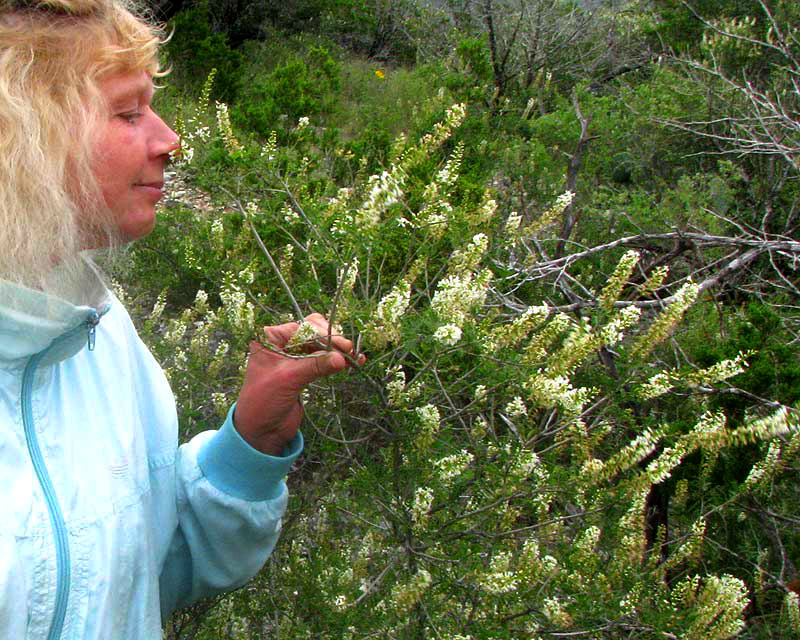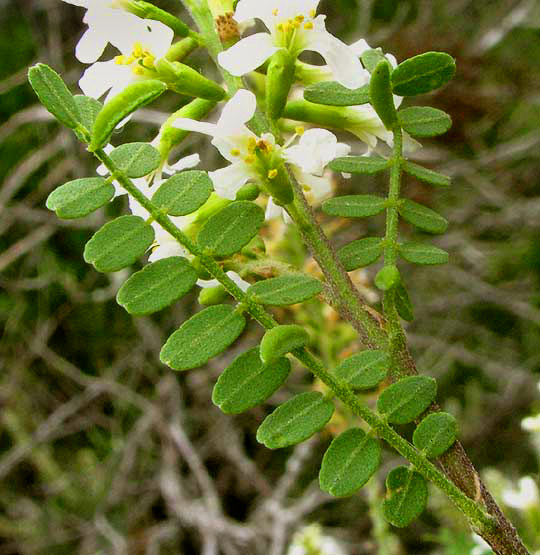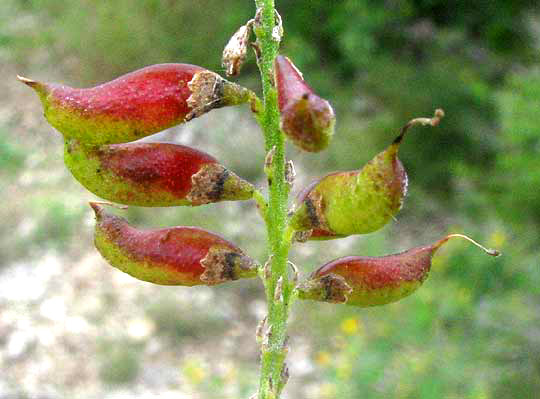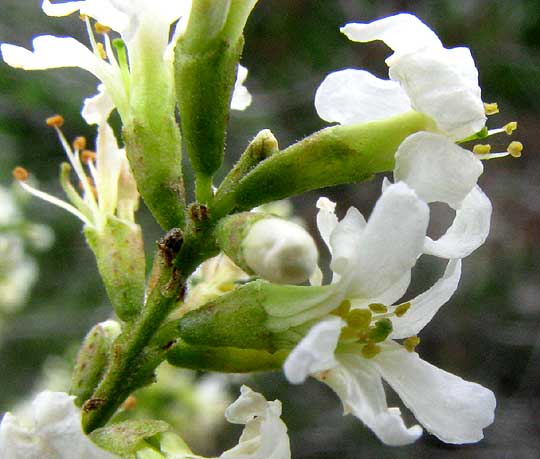Excerpts from Jim Conrad's
Naturalist Newsletter

from the the October 14, 2012 Newsletter issued from the valley of the Dry Frio River in northern Uvalde County, southwestern Texas, on the southern border of the Edwards Plateau; elevation ~1750m (~5750 ft); N29.62°, W99.86°; USA
TEXAS KIDNEYWOOD
In the thin, dry soil atop the limestone hill in front of the cabin the vegetation thins out so that you almost get what back in the mountains of Kentucky we called a
"bald" -- a spot so exposed to the elements that only a few highly specialized plants can grow there. In such places often you find rare and unusual organisms, and that's the only place I've seen the much branched, five-ft-high (1.5m) shrub whose current flowering is being admired by my Estonian lady-friend Malle above.
This is an unusual-looking bush, with narrow, three-inch-long (7.5cm), pinnately compound leaves with gland-dotted, aromatic, resinous leaflets and flowers, and the widely spaced leaflets held stiffly at right angles to their rachis, as shown below:

The bushes' fruits are just beginning to mature, and you can see that they are plump, stubby, legume-type fruits containing 2-4 beans below:

Alternate, pinnately compound leaves and legume-type fruits are good field marks for members of the Bean Family, so when you want to confirm that that's what you have by examining the flowers, you might get a bit confused. That's because this bush's blossoms don't display the usual Bean-Family "papilionaceous" structure -- the "butterfly-like," bilaterally symmetrical corolla composed of standard, wings and keel, as described at http://www.backyardnature.net/fl_beans.htm.
Our hilltop bush's flowers are scarcely at all papilionaceous, having petals of nearly equal length, as you can see below:

The bush is called Texas Kidneywood, Bee-Brush and Vara Dulce. It's EYSENHARDTIA TEXANA, native to dry, rocky, calcareous (limestone) soils of arid northern Mexico and in the US only found in south-central and southwestern Texas.
This is a fine little tree, its numerous, aromatic flowers attracting a wide variety of pollinators, and its twigs and leaves regarded as very palatable for deer and goats. Web pages describing the bush's uses copy from one another the fact that "the wood has been used for dyes and is fluorescent in water," but none tells what color the dye is or expands on its fluorescent wood.
In evolutionary terms, I'd imagined that Kidneywood's non-papilionaceous blossoms indicated that the genus Eysenhardtia might be an ancestral genus in the Bean Family, one arisen before more modern genera developed their now-characteristic papilionaceous flower structure. However, the gene sequencers have looked at that very question. In a 2004 paper in the American Journal of Botany online at http://www.amjbot.org/content/91/8/1219.full, McMahon and Hufford conclude that that's not the case. The "primitive condition" for the Bean Family is to have papilionaceous flowers. Kidneywood's almost radially symmetrical flowers are a relatively recent expression of the family.